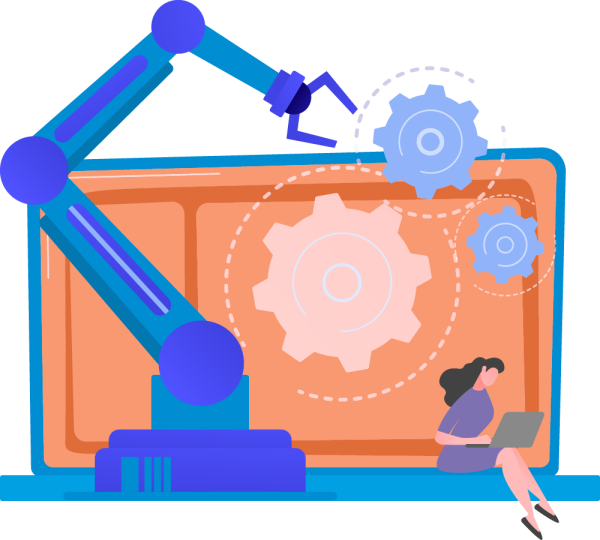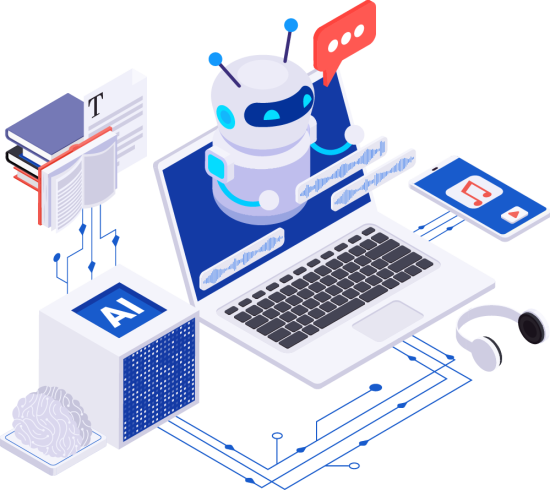Everyone is jumping on the bandwagon to bring artificial intelligence (AI) and machine learning (ML) to the enterprise. Unfortunately, too many IT executives fail to look before they leap. AI is not a panacea; it won’t solve every business problem. However, adopting an AI-first enterprise strategy can lay the foundation for a versatile enterprise infrastructure where AI and automation can yield a significant return on investments.
AI certainly is the new promise for the enterprise. As more organizations embrace data transformation, those who believe in the transformational power of AI are gaining a competitive edge. Business leaders see AI as an essential part of the new enterprise and are considering various ways to measure AI/ML ROI.
The market for AI-centric systems is exploding. IDC forecasts that global spending on AI will reach $154 billion in 2023, up 20% from 2022, and should pass $300 billion by 2026. That’s a compound annual growth rate (CAGR) of 27%.
According to Deloitte’s fifth AI in the Enterprise survey, 94% of professionals surveyed see AI as essential for success over the next five years. In 2022, 79% of respondents said they implemented three or more AI initiatives. However, 29% said these initiatives fell short of expectations, perhaps because they are standalone projects and not part of an AI-first initiative.
What Is an AI-First Enterprise?

When we talk about being AI-first, we mean using ML to anticipate the next right action, whether it’s improving business efficiencies, enhancing customer experience, or directing some other outcome. Forrester Research explains that AI-first means “creating machine learning and data models that are designed with an AI mindset instead of trying to use already created data to fit their AI.”
An AI-first enterprise means an organization that prioritizes the integration and application of AI across all operations, processes, and strategies. Too often, organizations try to implement AI into their existing enterprise infrastructure without considering the embedded knowledge needed to make AI effective. An AI-first enterprise can’t be an afterthought or a supplementary tool; it’s a fundamental component that drives every aspect of the business, including decision-making, innovation, and business growth. An AI-first enterprise tends to be built using experimentation and multiple iterations.
Organizations practicing opportunistic AI tend to be disappointed since ad hoc AI projects seldom align with business strategy. You can’t use AI as a hammer and look at every business challenge as a nail. An AI-first strategy enables you to utilize AI where and when it’s needed because AI is part of the enterprise’s DNA.
IBM research shows that enterprise AI-first initiatives are slow to show ROI but tend to operate on a J curve, so ROI increases with AI maturity. You must reimagine the entire enterprise as part of an AI-enabled infrastructure, including AI-driven business models, workflows, skill sets, and operations. ROI increases over time as the AI-first approach matures and scales.
The Benefits of an AI-First Strategy
Committing to an AI-first approach has been shown to yield a variety of business benefits:
Cost reduction
Using AI to automate business processes provides immediate savings, and adopting an AI-first approach continuously improves processes to compound savings over time.
Operational efficiency
By definition, an AI-first strategy improves operational efficiency by applying AI to automate processes that continue to evolve.
Customer experience
AI makes it easier to personalize the customer experience, providing tailored recommendations and customized support.
Innovation
Revenue growth
Improving customer experience reduces churn, and innovation creates new products that increase company revenue.
Competitive advantage
The ability to be more innovative and respond faster with the help of AI keeps you ahead of the competition.
Increased productivity
The more routine business processes that can be handled by AI, the more time employees have for important tasks.
Data Quality Drives ROI
Making optimal use of available data tends to close the ROI gap. For AI to be effective, you need better data, and you must be able to trust the data. Enterprises tend to generate cloud data lakes as part of digital transformation. Standalone AI projects tend to use these data lakes, even though the data was gathered before the AI models were designed. For enterprise AI to be effective, you must be able to trust the data. The better the data quality, the greater the AI returns.
IBM research also shows that companies with higher data wealth, i.e., large stores of reliable data, have more successful data-driven AI projects with higher ROI. Three out of four data leaders surveyed say that the value comes from applying AI to trusted data so they can make better, faster business decisions.
IBM’s research also concludes that having trusted data at the core of an AI-first enterprise enables six key capabilities that promote higher returns:
Vision and strategy – Know where to apply AI to improve innovation and performance.
An AI operating model – Ensure AI is embedded in the corporate culture.
AI engineering and operations – Provide AI solutions that are user-friendly, flexible, and scalable.
Data and technology – Ensure data access is simple and secure with automated controls.
Talent and skills – Apply an enterprise-wide strategy for AI talent, skills, and ethics.
AI culture and adoption – Use a human-centric approach to AI with feedback mechanisms.

Align ROI with the AI Use Case
You must have clarity regarding your metrics when assessing ROI for an AI-first enterprise. Not all returns can be measured in dollars. AI models tend to provide both tangible and intangible benefits, thus, you must include soft factors such as brand perception, employee morale, adoption of a data-driven culture, environmental impact, as well as concrete savings in terms of dollars, time, and resources.
Calculating ROI on any AI project is complex, but the earlier you establish the metrics, the easier it will be to gauge the returns. Measuring the ROI on any AI project should include the following steps:
1Understand the costs and benefits of the use case, including both tangible and intangible returns.
3Align your ROI approach with business goals so you are measuring against factors that deliver targeted business value.
AI is changing the enterprise, including how businesses approach digital transformation. AI helps businesses make smarter decisions and provides predictive analytics to prioritize transformation projects and identify new market opportunities. The right AI infrastructure and trustworthy data are foundations for unprecedented operating efficiency and innovation.
The potential ROI from an AI-first enterprise strategy is incalculable. AI has proven its value in automating routine business processes, but embracing AI-first enables organizations to capitalize on the strengths of AI in every facet of the business. AI enables innovation at new levels of velocity and scalability, unlocking the potential for unprecedented growth.
